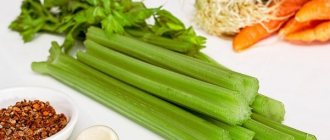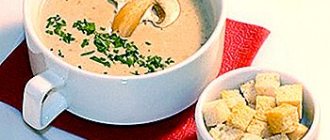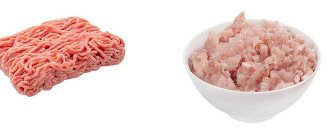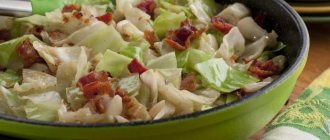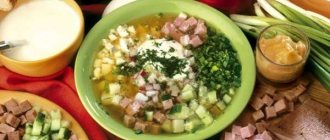What are the benefits of miso soup?
What this dish is, how many calories are in miso soup, what beneficial properties it has, all this is of great interest to those who lead a healthy lifestyle and monitor their health and figure. So we will try to answer these questions in the next article.
So here it is:
Constant consumption of shiitake can significantly prolong the youth of the body and increase life expectancy. This is due to the unique composition of imperial mushrooms. Shiitake is a product that improves metabolic processes in the body, breaks down cholesterol plaques in blood vessels and removes them, strengthens general immunity, and has an antioxidant effect on the cells and tissues of the body. Therefore, it is recommended to include shiitake dishes in your diet on an ongoing basis. By the way, shiitake is very useful for vegetarians because it contains vitamin D, which is rarely found in plant foods and is extremely necessary for the body.
Shiitake is a delicious product that will be appreciated by all lovers of tasty and varied food. You can prepare many different dishes from it, including preparing broths and adding them to soups instead of meat, as the Japanese happily do.
Tofu is a compressed soy cheese with a delicate, light flavor. This cheese is classified as a dietary and easily digestible food due to its composition, which is characterized by a high protein content. This is a lean product - it does not contain gluten and cholesterol, so it is effectively used as a means of losing weight.
Eating tofu has a beneficial effect on the cardiovascular and nervous systems, digestion, strengthens the immune system, and reduces the risk of gallstones and kidney stones. This cheese, due to its high iron content, increases hemoglobin levels.
Cooking
Miso soup is an easy dish, because simplicity of preparation is one of the principles of Japanese cuisine. Dry seaweed takes the most time, as it needs to be soaked for several hours to swell. This must be done first, and after they have become soft, drain the water and cut into large pieces.
The salmon should be cut into medium-sized pieces, removing the skin and bones. Chop the tofu cheese into 1 cm cubes, and cut the nori into thin long strips with scissors. Wash the green onions and finely chop them with a knife.
Boil half a liter of water, add miso paste to it and stir thoroughly until dissolved. Throw in the fillet pieces, cook for no more than 5 minutes and add the cheese and seaweed. Pour in soy sauce, stir and cook for 3 minutes. Fry sesame seeds in a dry frying pan until golden brown. Lastly, add nori and sesame seeds to the soup and turn off the heat - serve with chopped green onions.
How many calories does miso soup contain?
And here it is:
Prepare the soup according to this recipe:
Products (for 3 servings):
- Water – 1 l.
- Dried shiitake mushrooms – 40 g. – (132 kcal)
- Miso paste – 100 g. – (197 kcal)
- Japanese tofu curd – 250 g. – (182 kcal)
- Green onions - to taste
How to cook:
- Pour boiling water over the mushrooms, let stand for 10 minutes, put on the fire, bring to a boil and turn off.
- Let the mushrooms brew for another 20 minutes, after which we take out the mushrooms, strain the mushroom broth and put it back on the fire.
- Take a plate of miso paste, pour in a ladle of mushroom broth and stir well.
- Add tofu, cut into small cubes, into the boiling mushroom broth and cook for a minute.
- Pour the dissolved miso paste into the broth, stirring gently and turn off the heat. The soup is ready. Pour into plates and add green onions.
Based on the posted recipe:
The calorie content of miso soup, per 100 grams, is:
Proteins, fats and carbohydrates (BJU) in gr. per 100 grams:
Proteins - 3.3
Fats – 1.2
Carbohydrates – 3.9
Great video with a great recipe!
And further:
If you are taking medications, particularly monoamine oxidase inhibitors (MAOIs), talk to your doctor. Drugs in this group are characterized by negative interactions with tyramine found in the soup. Medical consultation is also necessary for hormone therapy.
Miso soup: homemade recipe, ingredients, calories
Everyone loves to eat delicious food, but still, there are no absolutely omnivorous people. Our tastes vary depending on nationality, region of residence, and individual preferences. However, Japanese cuisine has been trending for many years. Rolls, sushi and other dishes have also taken root in Russia. Many housewives have already managed to master the recipe for miso soup - an unusual delicacy, but nourishing and tasty.
The main accent of the table
We are so used to it that we need to eat something hot at least once a day. Most often it is soup. The choice is obvious, because this is a dish with broth, meat or fish, which means the eater will be full for a long time. But all kinds of borscht, solyanka, and soups sooner or later become boring. So why not master a miso soup recipe?
There is not a family in Japan that does not know this national dish, which consists of miso paste, broth and seasonal vegetables. In the Land of the Rising Sun there are 3 fundamental foods - rice, soy sauce and miso paste. The latter is produced in Japan from fermented soybeans, as well as wheat and barley.
Molds are used to ferment the cereals used. Should Europeans eat miso paste? Definitely worth it! This is an incredibly healthy product, rich in vitamins A and D, as well as calcium, zinc and iron. The taste and composition of the pasta vary slightly across regions of Japan. Accordingly, the taste of miso soup changes.
A little information
The broth in the soup is called “dashi”. It is made not only from plant materials, but also from dried fish, in particular tuna or sardines. By the aroma of the broth you can determine the list of ingredients used.
So, most often the dish includes soy cheese tofu and onion or negi, as well as wakame seaweed or even potatoes. In addition, the miso soup recipe can include mushrooms, carrots, daikon radish, fish and seafood.
But traditionally it is a vegetarian dish, so the variety with pork, for example, is called “tonjiru” or “pork soup.”
That is, there can be a lot of aspects in cooking, but the main rule remains unchanged - first the cook prepares the broth, and only then the dish itself, processing other ingredients.
By the way, in Japan, miso soup is often eaten for breakfast. This has been done for many centuries, and by representatives of all social strata. This allows us to emphasize the fact that all Japanese respect and recognize the benefits of the dish and its components.
Submission nuances
The Japanese have a limited list of popular products, so it's difficult to find a classic set for miso soup. It's easier to buy it in a store. True, then you will get limited portions, but this is not so bad for rare lovers of miso soup.
Buying a set is much cheaper than placing an order at a specialized restaurant. For the amount of 500-700 rubles you will get approximately 200-250 grams of miso paste, 50-100 grams of fish base, 40-60 grams of wakame seaweed and 300-500 grams of tofu bean curd.
This is a classic list that you can add and expand to your taste.
The ready-made set is good for traveling and a quick snack somewhere on vacation. But it’s much cheaper to make miso soup at home. Modern research confirms the benefits of the dish for the human body. All ingredients help strengthen the immune system and even prevent the development of malignant tumors.
When served, miso soup is poured into glossy bowls. Solid foods in it are eaten with chopsticks, and the broth can simply be drunk.
Fast food
You may be surprised, but this dish can be prepared easily and very quickly. The calorie content of miso soup is only 80 kcal per 100 grams, which allows you to fit the dish into both a romantic dinner and friendly gatherings. It only takes 20 minutes to prepare food for 2 people.
In the classic version, the soup is quite ascetic, but it can be supplemented with noodles and all kinds of herbs, for example, onions, dill, parsley and celery. Don't forget that the soup is served hot.
Let's go through the list of ingredients. You will need:
- 1.5 teaspoon dashi;
- half a glass of miso paste;
- green onions - to taste;
- 4 glasses of water;
- a tablespoon of seaweed.
Let's get started:
- The algae need to be filled with water so that they swell. For convenience, they need to be cut.
- Now put the water on the fire, bring it to a boil and add the dashi.
- In a separate bowl, combine the pasta with the hot broth, then add it and the chopped seaweed to the broth and cook for another 5-7 minutes.
- Chop the green onions into bowls just before serving.
If you are not on a diet, then allow yourself a slightly more hearty miso soup. The calorie option with salmon is only 102 calories. Fish will be a tasty addition. Both frozen and chilled products are suitable. The carcass must be cleaned of skin and bones. 250 grams of salmon is enough for two servings.
Also add a clove of garlic to the classic set of products. Cut the fish fillet into cubes and fry in vegetable oil for about five minutes. Add finely chopped garlic to the broth. Before serving, leave the miso soup with salmon to sit for five to seven minutes. Help yourself to the glory!
Hastily
If you're preparing for a romantic date, miso soup is a good choice. Its ingredients can add some sparkle to the mood. After all, a number of products can set us up for a love wave. For example, it’s not for nothing that shrimp are considered an erotic snack. With them, miso soup will be only slightly higher in calories, approximately 110 calories per 100 grams.
Replace tofu or salmon in the ingredient list with peeled shrimp (200g is enough). The cooking process will not be much more complicated, but the soup will acquire a new taste and aroma. Two servings can be prepared in half an hour:
- Bring water to a boil, adding dashi, and simmer for about 5-7 minutes.
- In a separate bowl, combine the miso and broth and add the mixture to the shrimp broth.
- Add chopped garlic to the soup and let the dish brew.
- It is served with green onions and ginger, which adds piquancy and heat.
Seafood is a known aphrodisiac, which will make miso soup even more aromatic and tasty. 300 grams is enough for soup for two servings. A couple of celery stalks are also added to the ingredient list. The cooking method remains the same as the classic one, but before serving, chop the celery stalks and place in plates. Its taste is very specific, but seduces with its freshness.
Lenten and delicious
Among lovers of Japanese cuisine, there are many who, for religious or any other reasons, adhere to a lenten or vegetarian diet. So, the recipe for miso soup is also useful and relevant for them.
How do you like the version with tofu, for example? The calorie content of the dish, by the way, is not very low in comparative terms, 112 kcal. After all, tofu is a soy cheese that has a lot of protein.
You can order soup with it in almost every cafe specializing in Japanese cuisine, but it is much more interesting to cook it yourself.
For 2 servings you will need:
- half a glass of tofu;
- one shallot;
- dasi;
- miso paste;
- wakame seaweed in the proportions indicated in the classic version.
Add diced tofu to the broth along with seaweed and pasta, and cut the shallots into rings and add just before serving.
Another lean option is with shiitake mushrooms. By the way, in the adapted version they can be replaced with ordinary champignons, which are abundant in any store. Mushrooms are suitable both fresh and dried. Before cooking, the latter must be soaked in cold water. 50 g of shiitake is enough for two servings of soup. Cut the mushrooms into centimeter strips and simmer with the pasta and broth for at least 10 minutes. Chop the celery into the soup before serving.
And finally, soup with the most indispensable product of the East - rice. Choose its type depending on your preferences. Rinse well and cook until half cooked along with dashi. Or cook the rice separately and then add to the soup just before serving. In this version, the list of ingredients is supplemented by shallots and one carrot. Cut the carrots into rings and cook with dashi. Add onion rings before serving.
For those with a sharp tongue
And if you want to shake up your taste buds, try making the spiciest version of this original soup with kimchi sauce. This option has a spicy-hot taste. In fact, it can be made with the addition of fish, mushrooms, seafood, but the main ingredient will be the miracle sauce, which can be purchased in supermarkets.
Add kimchi to taste so as not to overdo it and start a fire in your mouth. It pairs perfectly with miso soup with seafood and egg noodles. It is also good in chicken soup. For this option, buy poultry fillets and fry them in oil before simmering them with dashi. You can try adding grilled chicken to the soup. Cut the meat into strips and fry until cooked.
Vegetarian style
Include in your diet a completely vegetarian version of the soup, where dashi is not used due to the fish content. Children will like this soup, because it has a pleasant spicy aroma, and all the vegetables take on an unusual sound. You will need:
- mushrooms - 100 g;
- approximately 100 grams of tofu;
- a glass of green vegetables;
- vegetable broth.
Cover the mushrooms with water and let it brew. Add vegetables and mushrooms to the boiling broth, as well as miso and broth. This is an authentic instant miso soup that can be served at lunchtime when your child comes home from school. He will receive a portion of delicious soup with a whole palette of vitamins, micro- and macroelements.
In Russian
It must be admitted that fish miso soup does not always meet the needs of our nation. Russian people sincerely love meat and know how to cook it better than anyone else. So you can adapt miso soup and make it with spinach and pork.
THIS IS INTERESTING: How many calories are in boiled dumplings
The calorie content of the dish is kept at a minimum level - approximately 90 calories per 100 grams, but the ingredients here are more affordable. You will need:
- 2-3 spoons of miso paste;
- 300 g pork tenderloin;
- one carrot;
- 100 g noodles;
- 100 g spinach.
Boil miso, chopped carrots, and spinach in pork broth. Add noodles and boiled meat. Cook for another five minutes and serve.
Source: https://fb.ru/article/1903/dlya-teh-kto-hochet-poprobovat-nechto-ekzotichnoe—retsept-miso-supa
Set for miso soup, Sen soi 240 g
Miso soup is the most popular dish in Japanese cuisine. This is a light and, at the same time, very satisfying soup. There are many options for preparing this famous Japanese soup. It can be with meat, poultry, seafood, and a variety of vegetables and herbs. But there is a certain basic set that is required for Miso soup. This, of course, is, first of all, miso paste made from soybeans by natural fermentation. Also an obligatory ingredient in the soup is Hondashi fish broth. Soy cheese tofu, soy sauce and seaweed - all this is also indispensable, and fried sesame seeds will add an additional refined flavor and appetizing appearance to any version of Miso soup.
The set for making Miso soup from Sen Soi Premium contains everything that a skilled housewife or a sophisticated culinary gourmet who wants to prepare real Japanese soup at home might need. Products of the highest quality, completely natural and in every way consistent with the traditions of Japanese cuisine, namely:
— Miso paste — Hondashi fish broth (dry) — Tofu — Roasted sesame seeds — Wakame seaweed (Dried) — Soy sauce
will help you prepare wonderful Miso soup. You will discover this delicious, truly Japanese taste, and your guests will be surprised by your extraordinary skill and deep knowledge of Japanese cuisine.
The set includes:
Miso paste - net weight 120g.
Ingredients: soybeans, rice, salt, water.
Nutritional value per 100g. product:
Proteins - 12.3 g Fats - 5.5 g Carbohydrates - 24.6 g Energy value per 100g: 197.1 kcal
Dry fish broth "Hondashi" - net weight 7 g.
Ingredients: tuna fish powder, salt, glucose, thickener (E1400), monosodium glutamate.
Nutritional value per 100g. product:
Proteins - 22 g Fats - 1 g Carbohydrates - 32.3 g Energy value per 100g: 226.2 kcal.
Dried seaweed "Wakame" - net weight 6 g.
Ingredients: dried Wakame seaweed
Nutritional value per 100g. product:
Proteins - 9.7g Fats - 2.0g Carbohydrates - 55.9g Energy value per 100g: 280.4 kcal.
Storage conditions: from 1°C to 25°C
Roasted sesame seeds - net weight 6 g.
Ingredients: sesame seeds
Nutritional value per 100g. product:
Proteins - 15.4 g Fats - 23.6 g Carbohydrates - 3 g Energy value per 100g: 286 kcal.
Soy protein product “Tofu” - net weight 6 g.
Ingredients: soy milk (soybeans, water)
Nutritional value per 100g. product:
Proteins - 8.1 g. Fats - 4.2 g. Carbohydrates - 0.6 g. Energy value per 100g: 72.6 kcal.
Storage conditions: from 0°C to 25°C
Soy sauce “For Sushi” – net weight 15 g.
Ingredients: water, soybeans, wheat, salt, sugar, preservative: sodium benzoate
Nutritional value per 100g. product: Proteins - 3.5 g. Fats - 0 g. Carbohydrates - 11.0 g. Energy value per 100g: 58.0 kcal
Set for 6-8 servings
Ingredients of miso soup
The base of the soup is dashi broth. It is the basis of many Japanese dishes and soups, usually made from dried small niboshi sardines. Dried shiitake mushrooms and kombui seaweed are added to the soup. Very often, for nutritional reasons, various types of fish and shrimp, as well as potatoes and vegetables, are added to the soup. But the composition of the broth makes miso soup unique and is chosen freely. For example, in winter you can add thinly sliced pork to a dish in order to get a complete dish.
Ingredients for miso soup
Miso is a fermented soybean paste with rice, barley, wheat, salt and water. Each region of Japan has its own version of miso paste. They differ in appearance. The color can vary from white to brown, almost black. Various pastas to suit your taste. Miso is fermented from several months to several years. Light pasta is made with rice. It can be both sweet and not so sweet. Both options are suitable for miso soup. Red can also be used for making soup and marinades. It can be stored for up to 3 months. How to Make Miso Soup at Home The golden rule for making excellent miso soup is that the ingredients must work together harmoniously.
Okroshka with seaweed and white miso paste
Ingredients
- Baku cucumbers 8 g
- Radish 8 g
- Chicken egg 1 piece
- Mini potatoes 15 g
- Kaiso salad 15 g
- Green radish 8 g
- Green onions 2 g
- Bread kvass 1 l
- Creamy horseradish 5 g
- Sesame oil 2 ml
- White miso paste 20 g
Preparation
- 1. Pour a liter of kvass into the pan, turn on low heat and evaporate the kvass until you have 250 ml of kvass wort left. This wort will be the basis for the dressing.
- 2. Boil the potatoes and cool them. Cut the cooled potatoes into four wedges.
- 3. Boil the egg and cool it.
- 4. Cut cucumbers, radishes, and green radishes into strips.
- 5. Finely chop the green onions.
- 6. Place chopped vegetables, onions and kaiso seaweed on an ice plate.
- 7. Mix 60 ml of evaporated kvass, white miso paste, creamy horseradish and sesame oil.
- 8. Pour everything into a plate and put a boiled egg cut in half on top.
Miso soup with kelp
1 liter of broth 60 g miso paste 200 g canned shiitake mushrooms 50 g canned kelp
Shiitake mushrooms are added to miso soup if desired.
Wash the kelp and cut it into small pieces. Dissolve miso paste into some of the broth. At the same time, rinse the mushrooms with cold water and lower them into the broth. Add the kelp at the very last moment and the dish is ready.
How to make miso soup
There are different recipes for making miso soup, depending on the desired ingredients. But it is prepared according to the classic recipe:
- Bring 700 g of water to a boil and add dashi broth granules (ready-made ones are sold). Reduce heat and continue. Add to the soup, for example, broccoli, shrimp, onions and so on.
- Cut the tofu cheese into small squares.
- Soak the wakame seaweed for 10-15 minutes in cold water, then cut it into strips or small rectangles.
- Place the miso paste in a separate bowl and add some of the broth. Stir until the paste is completely dissolved.
- Pour the finished mixture into the pan with the broth. Add cheese and chopped seaweed.
- Reheating the soup for some time is important! But don't boil.
- Sprinkle with finely chopped onion. Serve immediately
If you want to add salmon to miso soup, for example, add the fish to the hot water of the soup before it comes to a boil. You can also prepare fish broth separately.
Cooking information for miso soup
When purchasing miso paste to make soup, try to avoid the pasteurized product. Spend money only on “live” food, rich in beneficial microorganisms.
The paste should be stored in the refrigerator in a tightly sealed container. Shelf life is up to 1 year. However, you can read about the properties of the products by selecting the ingredients marked in red.
Well, now let’s look at all the beneficial properties of miso soup. We try on the Kitchen Kitchen website to bring to the attention of culinary experts not only the method of preparing dishes, but also the chemical composition of the recipe. We sort all incoming products according to the properties of useful vitamins and minerals. In addition, you can always follow the red product links that will open in a new window , so as not to lose the recipe and read the article about all the qualities of the product.
Miso soup with shrimp and squid
1 liter of water for the broth light miso (to taste) dashi (to taste) boiled or canned squid - one carcass for four 5 pieces of shrimp per plate 1 egg for 4 plates dried seaweed to taste
Boil the water and add dashi to it. The broth should taste sweet and slightly salty so that miso can be added to it. Add the seaweed, and while it is boiling, beat the egg in a plate. Pour it in a thin stream into the boiling broth and stir constantly. Pour one ladle of broth into a cup and dilute the miso paste in it.
Dashi broth takes 2-3 minutes to cook
Arrange shrimp and squid in portions. Add the diluted pasta to the soup, stir once and turn off. Next, pour the soup into bowls and serve.

